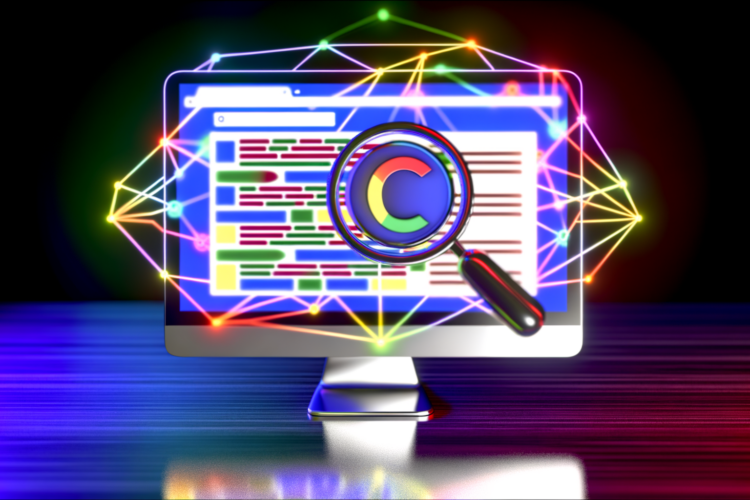
Optimizing for Google’s visual search within the SEO context means enhancing your visual content to ensure it’s easily discoverable and understandable by Google’s image recognition algorithms. As visual search grows in popularity, with platforms like Google Lens allowing users to search the web using images instead of text, it’s crucial for businesses to ensure that their visual content is indexed and ranks well on these platforms. This involves using high-quality, relevant images, correctly tagging those images with descriptive file names and alt attributes, as well as ensuring that the context surrounding the images on your pages, such as captions and nearby text, adds relevant information for search engines to latch onto.
Understanding Google’s Visual Search
To begin optimizing for Google’s visual search, you first need to understand how it works. Google’s visual search uses machine learning technology to analyze the content of an image and understand its context and components. It can read text within images, recognize objects, and classify visuals into categories. This level of understanding enables Google to provide accurate search results based solely on image queries.
The Importance of Image Quality
Google’s algorithms prefer clear, high-resolution images. The better the quality of your images, the easier it is for Google’s image recognition software to analyze and categorize them accurately. This means that when you upload images to your website, you should aim for the best possible quality without compromising loading times.
File Naming and Structure
Before you even upload images to your website, naming your image files correctly is a crucial step. Use descriptive, keyword-rich file names instead of generic names like “IMG_001.jpg.” More descriptive names help Google understand what the image depicts and how it’s related to the surrounding content.
Using Alt Text Effectively
Alt text stands for “alternative text” and serves two main purposes: accessibility and SEO. For visual search SEO, alt text provides a clear description of an image’s content and context, which is necessary for Google’s algorithms to index it properly. Craft alt text that is descriptive and keyword-conscious without being spammy.
Strategic Placement of Images
How and where you place images within content also has an impact on visual SEO. Images should be relevant to the accompanying text, and vice versa, as this context helps search engines understand the image’s purpose and relevance.
Technical Optimization for Visual Search
There are several technical aspects to consider when optimizing for visual search SEO. These include ensuring images are of the correct file type, loading quickly, and are displayed in the right context.
Adhering to File Type Best Practices
There are various image file types, and each has its advantages. JPEG images are suitable for photographs with many colors, PNG is good for transparent backgrounds, and WebP often offers a good balance of quality and file size. Be mindful of the file type and how it might affect load time and Google’s ability to index the image.
Optimizing Load Times
Page speed is a critical ranking factor for Google, and images can have a significant impact on your loading times. Optimize images for the web by compressing them without losing noticeable quality. This can be done using various tools and plugins that reduce file size while preserving clarity.
Leveraging Structured Data
Structured data can also enhance image visibility in search results. Using schema markup, you can provide explicit clues to Google about the meaning of your page’s content. When it comes to images, utilizing structured data can help highlight important visual information, such as adding schema markup for products, which can result in rich snippets that feature images directly in search results.
Content and Contextual Optimization
Creating Informative Content Surrounding Images
The text that surrounds your images is almost as important as the images themselves. Including informative and keyword-rich captions, titles, and descriptions around your images can significantly improve their SEO performance in visual searches.
Maintaining a Logical Content Flow
The overall structure of your content should make logical sense to both users and search engines. Images should not be placed randomly but should follow the narrative or informational flow of your content. This principle helps Google place your images in the correct context.
Image Prominence and User Engagement
Featuring Images Prominently
An image’s position on a page can indicate its importance. Using large, prominent images can signal to Google that this is a central piece of content on the page, potentially improving its likelihood of appearing in visual search results.
Enhancing User Interaction with Images
Images can be interactive, such as when used in a gallery format or when they’re clickable. When images are integrated into an interactive design, it boosts user engagement, which can indirectly influence SEO rankings, including visual search results.
Monitoring Your Visual SEO Performance
Just like with traditional SEO, it’s vital to monitor how your images perform in search results. Google Search Console offers a “Search Appearance” filter where you can see how many impressions and clicks your images are getting in search results. Pay attention to these metrics and adjust your strategy accordingly.
Using Analytics to Refine Your Strategy
Employ web analytics tools to see how users interact with your images – which images attract attention and which do not. This data can be valuable in refining your visual content strategy to emphasize the types of images and content that work best for your audience.
Staying Updated with SEO Trends
SEO continuously evolves, and that includes visual search optimization. Stay informed of the latest trends and algorithm updates to ensure that your visual content remains optimized for the best possible search performance.
Finishing Thoughts
Optimizing for Google’s visual search requires a multi-faceted SEO approach that takes into account the quality, technical specifications, context, and user engagement of your images. By combining traditional SEO techniques with a keen eye for the visual aspects of your content, you can enhance your visibility in image search results and connect with users in a more meaningful way. Remember to monitor your results, keep adapting your approach, and always prioritize the user experience. Successful visual search optimization lies at the intersection of technology, creativity, and strategy – aiming to offer valuable visual content that search engines can’t ignore.
Frequently Asked Questions
What is Google’s Visual Search?
Google’s Visual Search, also known as Google Lens, allows users to search the web using images instead of text. Users can upload an image or use their camera to find information about objects, landmarks, animals, plants, products, and more. The technology uses machine learning to recognize the content of images and provide relevant results.
How can I optimize my website for Google’s Visual Search?
To optimize your website for Google’s Visual Search, you should focus on image optimization and ensure that your images are of high quality and accurately tagged. Make sure to use clear, high-resolution images, provide relevant alt tags, use descriptive filenames, and leverage structured data when applicable. Additionally, creating an image sitemap and submitting it to Google can help your images be discovered more easily.
Why are alt tags important for Visual Search SEO?
Alt tags (alternative text) provide a text description of an image for web crawlers and for users who are visually impaired. In Visual Search SEO, alt tags help search engines understand what the image depicts, which can then be matched with visual search queries. Properly described alt tags increase the chances of your images ranking in visual search results.
Does the context around an image affect its Visual Search ranking?
Yes, the context around an image significantly affects its ranking in Visual Search results. Google not only analyzes the image itself but also considers the content on the page where the image is located. Ensure that surrounding text and page titles are relevant and provide clear information about the image’s content.
What is structured data, and how does it relate to Visual Search?
Structured data is a standardized format to provide information about a page and classify the page content. For images, using structured data like Schema.org markup can help provide explicit clues to search engines about the meaning and category of the content. For example, using Product schema can help e-commerce product images appear in relevant visual search results.
How does mobile optimization affect Visual Search?
Mobile optimization plays a crucial role in Visual Search as a significant amount of visual searches are performed on mobile devices. Ensure that your website is mobile-friendly, with responsive design and fast loading times for images. A better mobile experience can lead to higher engagement, which is a positive signal for search engine rankings.
Can user-generated content impact my site’s visibility in Visual Search?
Yes, user-generated content, such as customer reviews with images or Q&A sections that include images, can positively affect your visibility in Visual Search. This type of content can provide additional context and relevancy for your images, making them more likely to show up in Visual Search results. Encourage users to upload high-quality images and provide descriptive text to accompany them.
What is an image sitemap, and how do I create one?
An image sitemap is an XML sitemap created specifically for images. It helps search engines discover images that might not be easily found through typical crawling processes. To create an image sitemap, you can add image information to your existing sitemap or create a separate sitemap for your images and submit it to Google via the Search Console.
How important is the loading speed of images for Visual Search SEO?
Loading speed is critical for SEO in general, including Visual Search. Optimizing images for faster loading times can improve user experience and increase the likelihood of your images being indexed and ranked. Compress images without compromising quality, use adaptive image serving techniques, and consider using modern image formats like WebP for better performance.
Can social media influence my ranking in Google’s Visual Search?
While social media signals are not a direct ranking factor for Google’s search results, having your images shared on social media can increase their visibility and the likelihood of them being indexed. Additionally, social media platforms themselves often have their own visual search capabilities, which can be an added benefit for discoverability.






